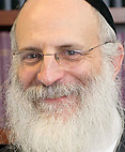Abnormal T-cell repertoire is consistent with immune process underlying the pathogenesis of paroxysmal nocturnal hemoglobinuria Journal Article
| Authors: | Karadimitris, A.; Manavalan, J. S.; Thaler, H. T.; Notaro, R.; Araten, D. J.; Nafa, K.; Roberts, I. A. G.; Weksler, M. E.; Luzzatto, L. |
| Article Title: | Abnormal T-cell repertoire is consistent with immune process underlying the pathogenesis of paroxysmal nocturnal hemoglobinuria |
| Abstract: | Paroxysmal nocturnal hemoglobinuria (PNH) is an acquired clonal disorder of the hematopoietic stem cell (HSC), Somatic mutations in the PIG-A gene result in the deficiency of several glycosylphosphatidylinositol-linked proteins from the surface of blood cells. This explains intravascular hemolysis but does not explain the mechanism of bone marrow failure that is almost invariably seen in PNH. In view of the close relationship between PNH and idiopathic aplastic anemia (IAA), it has been suggested that the 2 disorders might have a similar cellular pathogenesis, namely, that autoreactive T-cell clones are targeting HSCs. In this paper, we searched for abnormally expanded T-cell clones by size analysis of the complementarity-determining region 3 (CDR3) in the beta variable chain (BV) messenger RNA, (mRNA) of the T-cell receptor (TCR) in 19 patients with PNH, in 7 multitransfused patients with hemoglobinopathy, and in 11 age-matched healthy individuals. We found a significantly higher degree of skewness in the TCR BV repertoire of patients with PNH, compared with controls (R-2 values 0.82 vs 0.91, P<.001). The mean frequency of skewed families per individual was increased by more than 2-fold in patients with PNH, compared with controls (28% +/- 19.6% vs 11.4% +/- 6%, P=.002). In addition, several TCR BV families were significantly more frequently skewed in patients with PNH than in controls, These findings provide experimental support for the concept that PNH, like IAA, has an immune pathogenesis. in addition, the identification of expanded T-cell clones by CDR3 size analysis will help to investigate the effect of HSC-specific T cells on normal and PNH HSCs. (Blood, 2000;96:2613-2620) (C) 2000 by The American Society of Hematology. |
| Keywords: | proteins; peripheral-blood; multiple-sclerosis; rheumatoid-arthritis; blood-transfusion; hematopoietic-cells; pig-a gene; acquired aplastic-anemia; clonal populations; anchored; elderly humans |
| Journal Title: | Blood |
| Volume: | 96 |
| Issue: | 7 |
| ISSN: | 0006-4971 |
| Publisher: | American Society of Hematology |
| Date Published: | 2000-10-01 |
| Start Page: | 2613 |
| End Page: | 2620 |
| Language: | English |
| ACCESSION: | WOS:000089552500043 |
| PROVIDER: | wos |
| PUBMED: | 11001919 |
| DOI: | 10.1182/blood.V96.7.2613 |
| Notes: | Article -- Source: Wos |
Altmetric
Citation Impact
BMJ Impact Analytics
Related MSK Work





